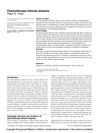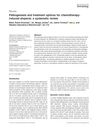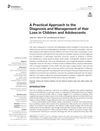Tackling Chemotherapy-Induced Alopecia
January 2012
in “
International journal of trichology
”
chemotherapy-induced alopecia dystrophic anagen effluvium scalp cooling topical minoxidil cyclin-dependent kinase 2 inhibitors laminin-511-rich protein extracts alpha lipoic acid derivatives PTH-CBD immunomodulators AS101 immunophilin ligands cyclosporine A FK 506 CIA minoxidil Rogaine CDK2 inhibitors laminin-511 alpha lipoic acid PTH cyclosporine tacrolimus
TLDR Chemotherapy-induced hair loss is a major concern, but various treatments show promise in preventing and reversing it.
Chemotherapy-induced alopecia (CIA) was a significant concern for patients, with 47% of female patients finding it the most traumatic aspect of treatment and 8% potentially declining chemotherapy due to fear of hair loss. CIA typically resulted from dystrophic anagen effluvium and was usually reversible, though some regimens could cause permanent alopecia. Various treatments and preventive measures were explored, including scalp cooling, topical minoxidil, and inhibitors of cyclin-dependent kinase 2 (CDK2). Experimental models showed promising results with laminin-511-rich protein extracts, alpha lipoic acid derivatives, PTH-CBD, and immunomodulators like AS101. Additionally, immunophilin ligands such as cyclosporine A and FK 506 demonstrated potential in preventing hair loss and promoting hair growth.




